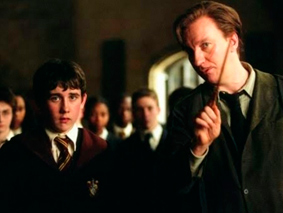Prof. Dr. Ayşegül Amanda Yeşilbursa
Bursa Uludağ University
As English Language teachers, we often spend a lot of time preparing activities and materials to use with our students. We take great pains to ensure that our activities meet the objectives of the lesson, and that they are engaging for the students. Not to mention the portion of our salaries that we set aside for stationery costs. However, no matter how imaginative or appealing our activities may be, if we have not planned our instructions well beforehand, students will have difficulties understanding, and the lesson can fall flat. Then we get frustrated and resort to using Turkish. Is the limited use of LI helpful in monolingual contexts? It may be so as argued by some scholars. However, limited use of L1 can be helpful in monolingual contexts only if it ultimately facilitates the learning of English. So, creating an ‘English atmosphere’ in the classroom from the beginning is far more conducive to language learning (Scrivener, 2012). Put simply, if we resort to Turkish at the first sign of a problem, then we are robbing our students of valuable exposure to English.
Often problems are not caused by the use of English as such, but rather the quantity and the quality of the English we use. We may use over-complicated language or sentences that are too long. Maybe we do not pay attention to pausing or using stress in the right places, or breaking long instructions into more manageable chunks. Fortunately, classroom instructions have a very recognisable structure that can be learned and practised by both student and novice teachers. In this article, I aim to present concrete and practical suggestions for planning classroom instructions for communicative activities. I will first touch upon some of the typical problems that English language teachers face when giving instructions. I will then outline Scrivener’s (2012) framework for effective instructions. Finally, to show this framework in action, I will present two observation activities that can be used while watching the first lessons of two professors from the Harry Potter film series: Gilderoy Lockhart and Remus Lupin.
Sometimes even the most familiar-looking EFL activities can catch us out. For example, you have been covering the foods and drinks unit with your A2 level Grade 10 students (MoNE, 2018). The speaking activity in the coursebook is a role play at a restaurant. There is a menu. One student is the waiter the other is the customer (see Figure 1). You have seen this kind of activity before so many times you could teach it with your eyes closed. What could possibly go wrong? Let’s see.
|
STUDENT A: You are the waiter. Take the customer’s order for:
|
STUDENT B: You are the customer. Decide what you want for:
|
Figure 1. Role cards for a hypothetical speaking activity
Listen and read a teacher’s instructions for this activity. Use the checklist provided in Appendix A to evaluate the effectiveness of the instructions.
|
So, what I would like you to do is this. First of all, I’d like you to imagine you’re a waiter. Well, that’s Student A. If you were the waiter, what would you do? And Student B, if you were the customer what would you say? Oh, that’s right, guys, you’ll all need to look at the menu. Actually you both will, OK? So you do that and talk together. All right? |
Figure 2. Teacher’s instructions
 You have probaby ticked the “unacceptable” box for all the criteria. The instructions are unacceptable because the teacher probably did not plan her instructions before the lesson. All English teachers, whether native speakers or non-native speakers, need to plan their instructions. Native speaking teachers may rely on their spontaneity, and their instructions could be too much like everyday speech. On the other hand, non-native speaking teachers may find it difficult to adapt their language to their students’ level and use over complicated syntax and lexis. Neither situation helps students to understand what is expected of them, and the teacher resorts to L1. However, keeping this checklist in mind when planning to use a communicative activity in class can help you make the quality and quantity of your English instructions more effective and reduce the likelihood of you having to use L1.
You have probaby ticked the “unacceptable” box for all the criteria. The instructions are unacceptable because the teacher probably did not plan her instructions before the lesson. All English teachers, whether native speakers or non-native speakers, need to plan their instructions. Native speaking teachers may rely on their spontaneity, and their instructions could be too much like everyday speech. On the other hand, non-native speaking teachers may find it difficult to adapt their language to their students’ level and use over complicated syntax and lexis. Neither situation helps students to understand what is expected of them, and the teacher resorts to L1. However, keeping this checklist in mind when planning to use a communicative activity in class can help you make the quality and quantity of your English instructions more effective and reduce the likelihood of you having to use L1.
It is not just the quality and quantity of English that make classroom instructions effective. We also need to make every element of an activity absolutely clear. Fortunately, classroom instructions follow an identifiable framework. The first step is the frame, in which we attract the students’ attention and indicate that we are moving onto a different part of the lesson. The second is the summary of the task and purpose, in which we inform the students of the type (e.g., role play) and purpose (e.g., to practice ordering a meal) of the activity. This is followed by telling the students about the organization of the activity: whether they will be working in pairs or groups, for example. At the fourth step, we explain the procedure of the activity, and this is when we must take into consideration the factors that we dealt with in the previous section. After we have explained the procedure, we need to inform the students about the outcome of the activity. For example, will they perform their role play in front of the class? Will they video record their role play and upload it onto their vlogs (MoNE, 2018)? At the sixth step, we can give the students some strategies to help them do the activity. For example, we could tell them to keep their role cards secret from each other. Or we could tell them to put their pencils and notebooks away so they can focus on speaking rather than reading aloud.The seventh step is giving the timing of the activity. The students should know how long they have got to prepare: 30 minutes may indicate that the students have plenty of time to pay attention to detail and to practice, whereas 10 minutes suggests that they have to be quick and think on their feet. Finally, you should give the cue to start: make sure that everyone has understood and that everyone starts when you tell them to (Scrivener, 2012).
Having discussed the elements of effective instructions, in the following section I will present an opportunity for you to watch these elements in action.

In order to follow these activities, you will need to have access to the Harry Potter and the Chamber of Secrets (Heyman & Columbus, 2002), and Harry Potter and the Prisoner of Azkaban (Heyman, Columbus, Radcliffe, & Cuaron, 2004) films. Previously, I have described how we can reflect on our classroom interaction patterns in general by observing Hogwarts teachers (Yeşilbursa, 2018). In the following section, I will focus on two teachers, Gilderoy Lockhart and Remus Lupin, and how they give instructions.
Gilderoy Lockhart comes to Hogwarts School of Wizarding to teach Defence Against the Dark Arts when Harry Potter and his friends are in their second year (Heyman & Columbus, 2002). He is quite a celebrity in the wizarding world, and it is clear from his dress, behavior and discourse that he thinks highly of himself.

His first lesson with Harry’s class starts at around 35 minutes into the film. We watch him walk down a staircase to enter the classroom for all to see. As he descends he is telling the class about his high achievements, and our expectations of his lessons are high. He starts the lesson by attracting the students’ attention to a covered cage which seems to contain something alive and possibly dangerous (it turns out there are blue Cornish pixies inside).
So far the lesson is quite effective: the teacher has brought in authentic material, he has attracted the student’s attention, and it is clear the activity is going to be ‘hands-on’. However, as we watch the scene unfold we see that the lesson turns into a disaster, with Cornish pixies escaping from the cage and causing chaos, Lockhart running away, the dragon skeleton crashing to the ground, Neville Longbottom being hung from a chandelier by the pixies, and Hermione Granger using her intelligence to round up the pixies single-handedly. At the end of the film, we learn that he was a fraud and that none of his achievements were real.
As general viewers we find this scene amusing, as Gilderoy Lockhart reveals his true incompetence and Hermione saves the day, as usual. However, as teachers, we can analyse the scene in terms of Scrivener’s (2012) framework to describe Lockhart’s incompetence, and therefore avoid falling into the same trap. So, let’s do an analysis.
First of all, to his credit, Lockhart does frame the activity effectively with the authentic material and element of curiosity. However, there is no summary or purpose, he does not give any details about the organization or the procedure. The students do not know how or why they are doing the activity. We can infer that the outcome of the activity is putting all the pixies back in the cage. He does not share any strategies with the students to help them succeed. Will they use their wands? An incantation? A potion? Or maybe a combination of these? None of this is clear, and it is difficult to see how the activity might fit the objectives of the lesson. Lockhart does not tell them how much time they have to do the activity. He does, however, give a cue to start by opening the cage and freeing all the pixies at once. As a result, we could say that the activity fails because Lockhart does not know how to give clear instructions.
 To connect this scene with ELT, with my student teachers, I give the example of a hypothetical, well-intentioned teacher who wants his/her students to be able to watch and ‘understand’ a film in English. S/he plays the film and tells his/her students to ‘Just watch and try to understand’. Without a concrete activity or clear instructions, the students ‘understand’ different aspects of the film to different degrees. As a result, more proficient students may rely on their own resources to make sense of the film, like Hermione. On the other hand, less proficient students may ‘understand’ very little and feel discouraged, like Neville Longbottom. At then end of the film when the teacher asks ‘What did you understand?’, which is a vague question with many possible correct answers, it is very unlikely that the students will engage in a lively discussion, and the teacher becomes discouraged as a result.
To connect this scene with ELT, with my student teachers, I give the example of a hypothetical, well-intentioned teacher who wants his/her students to be able to watch and ‘understand’ a film in English. S/he plays the film and tells his/her students to ‘Just watch and try to understand’. Without a concrete activity or clear instructions, the students ‘understand’ different aspects of the film to different degrees. As a result, more proficient students may rely on their own resources to make sense of the film, like Hermione. On the other hand, less proficient students may ‘understand’ very little and feel discouraged, like Neville Longbottom. At then end of the film when the teacher asks ‘What did you understand?’, which is a vague question with many possible correct answers, it is very unlikely that the students will engage in a lively discussion, and the teacher becomes discouraged as a result.
Teaching is more than telling students to do something and expecting them to do it. The second teacher, Remus Lupin, provides us with an example of how to scaffold a potentially difficult, even dangerous, activity and help the students to feel successful.
Remus Lupin joins Hogwarts in Harry’s third year (Heyman, Columbus, Radcliffe, & Cuaron, 2004) to teach Defence Against the Dark Arts. His appearance, behaviour and attitude to the students is very teacher-like. The only drawback is that he is a werewolf, and he has to leave the school at the end of the year for the safety of the students.
His first lesson with Harry’s class begins around 41 minutes into the film. The beginning of the scene focuses on an old wardrobe that is shaking. Obviously, there is something inside it that is trying to get out. We see that the students are standing up, facing the wardrobe. Lupin is already in the classroom, he is standing behind the students. As he walks to the front of the classroom he is asking the students questions. Can they guess what is inside the wardrobe? Seamus Finnegan answers that it’s a boggart. Lupin praises him. Then he asks what a boggart looks like (emphasizing ‘look’). Hermione begins to answer, saying that boggarts are shape-shifters. Perhaps sensing that Hermione could give an unnecessarily long and detailed answer, Lupin praises her and finishes off her sentence. Boggarts turn into our deepest, darkest fears.
 At this point, Lupin is now at the front of the classroom, between the students and the shaking wardrobe. He tells them that there is fortunately a simple spell to protect them against boggarts, and that they will learn it today. First, he practices the incantation chorally. Then he says that students must try to think of something funny to make the boggart change shape again.
At this point, Lupin is now at the front of the classroom, between the students and the shaking wardrobe. He tells them that there is fortunately a simple spell to protect them against boggarts, and that they will learn it today. First, he practices the incantation chorally. Then he says that students must try to think of something funny to make the boggart change shape again.
To demonstrate this, he asks Neville Longbottom to come to the front. Neville is obviously nervous as he comes to the front, with Lupin’s encouragement. Lupin asks him what he fears most, and Neville replies ‘Professor Snape’. The class laughs, and Lupin replies that they were all scared of Snape. Then, he asks Neville to think about his grandmother’s clothes. Neville starts to speak, but Lupin tells him that he should just think about them. Then Lupin tells Neville to hold his wand and get ready. Lupin opens the wardrobe, the boggart comes out in the shape of Professor Snape. Lupin stands close to Neville and tells him to think of his grandm mother’s clothes. Neville looks at the bboggart, says the incantation, and the boggart turns into Snape wearing Neville’s grandmother’s clothes. Lupin praises him, and Neville looks happy at his success.
Having demonstrated the activity successfully with Neville, Lupin gets the class to stand in a line so everyone can have a turn. He plays some lively jazz music on a record player as he calls on the students in turn. He stands at the side of the classroom and gives encouragement and paraise as Ron Weasley and then Parvati Patil come to the front and successfully change the boggart. When it’s Harry’s turn, the boggart changes into a dementor, a creature that can drain away all the happy feelings and memories from people. Harry stands still, staring at the dementor. Lupin senses something is wrong. He looks up, and before the dementor/boggart can attack Harry, he leaps between Harry and the boggart. The boggart turns into a full moon, Lupin’s greatest fear, which he then turns into an untied balloon that flies through the air and into the wardrobe. Lupin slams the door shut, and then dismisses the class.
 As general viewers, we watch this scene with some excitement. Will the dementor attack Harry? Will everybody see that Lupin’s greatest fear is a full moon, and therefore understand that he is a werewolf?
As general viewers, we watch this scene with some excitement. Will the dementor attack Harry? Will everybody see that Lupin’s greatest fear is a full moon, and therefore understand that he is a werewolf?
However, as EFL teachers we can observe this scene at another level. Not only does Lupin look like a teacher in his old, brown suit; he also actually teaches. Let’s go back to Scrivener’s (2012) framework for effective instructions.
First, he frames the activity by putting the authentic material (the boggart in the wardrobe) at the front of the class. In this way he attracts the students’ attention. Unlike Lockhart, he doesn’t make a grand entrance into the classroom. He is already there, he is taking ownership of the lesson. He continues the frame by asking students questions that make students think about boggarts. He focuses on the appearance of boggarts, which is important for this particular lesson. He doesn’t focus on unnecessary or distracting knowledge.
When he gives the summary and purpose of the activity, he reassures the students that the spell is simple. When he teaches the procedure, he breaks the spell down into two manageable parts: the incantation and the mind control. They practice each one separately: the incantation chorally, and the mind control through demonstration. These are the strategies the students need to be successful. The demonstration in this scene is particularly significant. Lupin chooses Neville Longbottom, one of the weaker students in the class: he has an unfortunate accident in almost every lesson. With Neville, he shows step by step how to change a boggarts appearance just by imagining something amusing. All the time Lupin is close, ready to step in if Neville has difficulty.
When I ask my student teachers why Lupin chose Neville, I get two answers. The first is what I call the ‘cynical’ answer: Lupin is showing the students that if Neville can do this activity, anybody can do it. The second answer, which is more ‘ideal’, is that Lupin wants every student to have a turn, but he knows that Neville may have difficulty. By demonstrating with Neville, he can provide maximum scaffolding for him to carry out the activity successfully. Neville’s happy face when he completes the activity successfully shows that Lupin had made the right decision. Moreover, the outcome of the activity is clear: the boggart changes shape.
For the organization of the activity, Lupin has the students stand in a line. This an activity that must be done individually, and everyone will have a turn. He doesn’t give the timing directly, but his choice of jazz music in the background both helps to keep the pace of the activity lively, and creates a fun atmosphere. His cues to start are also clear. He calls on each student by name, and tells them to have their wands at the ready. Moreover, he is constantly monitoring the students and he knows when an activity may get out of control.
In short, Lupin has a good command of both content knowledge and pedagogical content knowledge. He knows what he will teach, he is aware of the potential difficulties that his students may have, he knows how to scaffold an activity and when to intervene if necessary.
Professor Lupin may be teaching how to deal with boggarts as part of the Defence Against the Dark Arts class. However, the parallel with what we do in EFL classes is striking: authentic materials, authentic ‘hands-on’ tasks, and effective instructions as part of the scaffolding.
In this article, I have discussed ways in which we can improve the quality and quantity of our classroom instructions. I presented a checklist and a framework for effective instructions. Finally, I presented two examples of teachers from films that exemplify the framework suggested.
At the beginning of the discussion, I presented an example of ineffective instructions for a role play activity. Based on what we have discussed in this article, can you improve these instructions? Example instructions given in Figure 3.
Happy instruction-giving!
Table 1. Checklist for clear instructions
|
Instructions Checklist |
Evaluation |
||
|
The teacher… |
E |
A |
U |
|
1. attracts students’ attention before giving instructions. |
|
|
|
|
2. uses language at or below the students’ level. |
|
|
|
|
3. uses short sentences: one sentence for each instruction. |
|
|
|
|
4. speaks slowly and clearly. |
|
|
|
|
5. pauses after each instruction. |
|
|
|
|
6. sequences the instructions. |
|
|
|
|
7. signposts the instructions (e.g., ‘First …, second …’) |
|
|
|
|
8. emphasises key words. |
|
|
|
|
9. checks that the students understand the instructions. |
|
|
|
Note: E=effective; A= acceptable; U=unacceptable Adapted from Scrivener (2012)
|
Figure 3. Suggested improved instructions
Heyman, D. (Producer), & Columbus, C. (Director). (2002). Harry Potter and the chamber of secrets. [Motion picture]. United States: Warner Bros. Pictures.
Heyman, D., Columbus, C., Radcliffe, M. (Producers), & Cuaron, A. (Director). (2002). Harry Potter and the prisoner of Azkaban. [Motion picture]. United States: Warner Bros. Pictures.
Ministry of National Education, (2018). Secondary level English lessons: 9th-12th grade curriculum. Ankara: Ministry of National Education.
Scrivener, J. (2012). Classroom management techniques. Cambridge: Cambridge University Press.
Yeşilbursa, A. (2018). Put a spell on your class. EL Gazette, (April), 456.
Copyright © 2020 ELTKIT. All rights reserved.